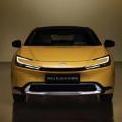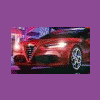Porsche 911 2019 [Carrera, Carrera S, 4, 4S]
-
Contenuti simili
-
- 1712 risposte
- 275893 visite
-
Porsche 718 Cayman e Boxster 2027 (Spy) 1 2 3 4 11
Pubblicato da Beckervdo,
- 718 boxster
- boxster ev
- (e 13 altri in più)
- 100 risposte
- 24651 visite
-
- 0 risposte
- 551 visite
-
-
-

















.thumb.jpg.902d2a4f20a129e92b6f6920407b81bd.jpg)


Messaggi Raccomandati:
Crea un account o accedi per lasciare un commento
Devi essere iscritto per commentare e visualizzare le sezioni protette!
Crea un account
Iscriviti nella nostra community. È facile!
Registra un nuovo accountAccedi
Sei già registrato? Accedi qui.
Accedi Ora